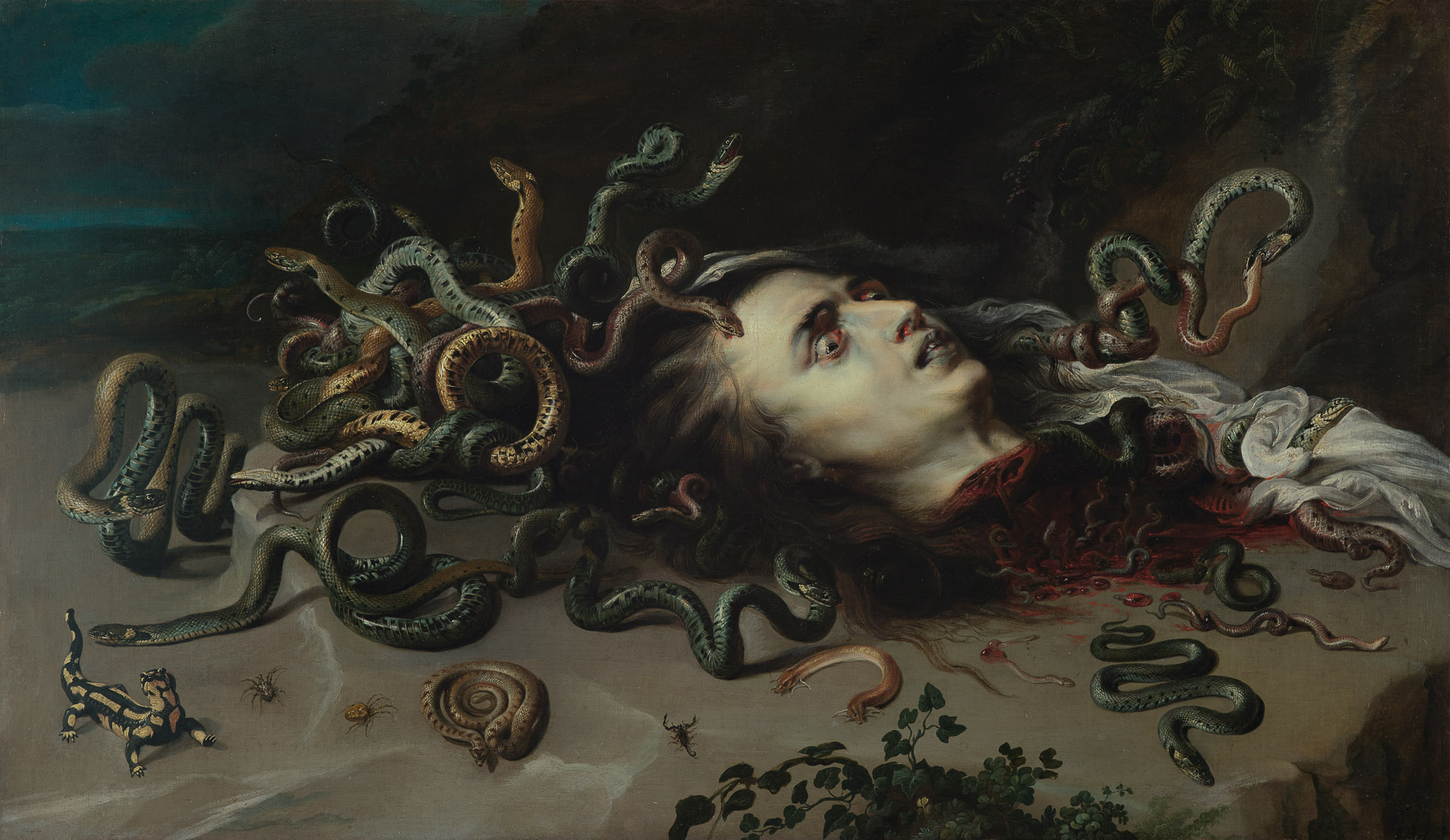Have you heard that the Kunsthistorisches Museum in Vienna has a huge exhibition of Rubens works until January 21st, 2018? The selection of works includes about 70 loans from the world's major collections, including this scary Medusa!
As Ovid relates in The Metamorphoses, Neptune raped the beautiful Medusa in the temple of Minerva. In punishment the goddess transformed Medusa’s magnificent hair into snakes and caused her glance to turn the viewer to stone. Finally, Perseus succeeded with the aid of a mirrored shield in approaching and slaying her. Rubens’ contemporaries saw in the Medusa more than a horrifying creature. It was interpreted both as a triumph of stoic reason over the foes of virtue, and as the possibility of controlling passions and exercising stoical equanimity through implacable realism. The snakes were likely executed by a specialist, Frans Snyders, but the idea was Rubens’. Whilst the comportment of the two intertwined animals to the right was likely drawn from contemporary emblems, their zoologically accurate rendering is based on Rubens’ own close study of nature. For some examples, such as the winding snake in the right foreground, Rubens probably also used casts made from nature, which were particularly popular in northern Italy.


 Peter Paul Rubens
Peter Paul Rubens